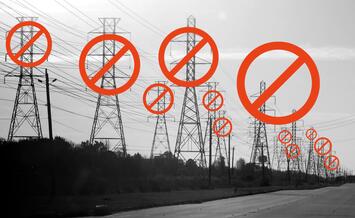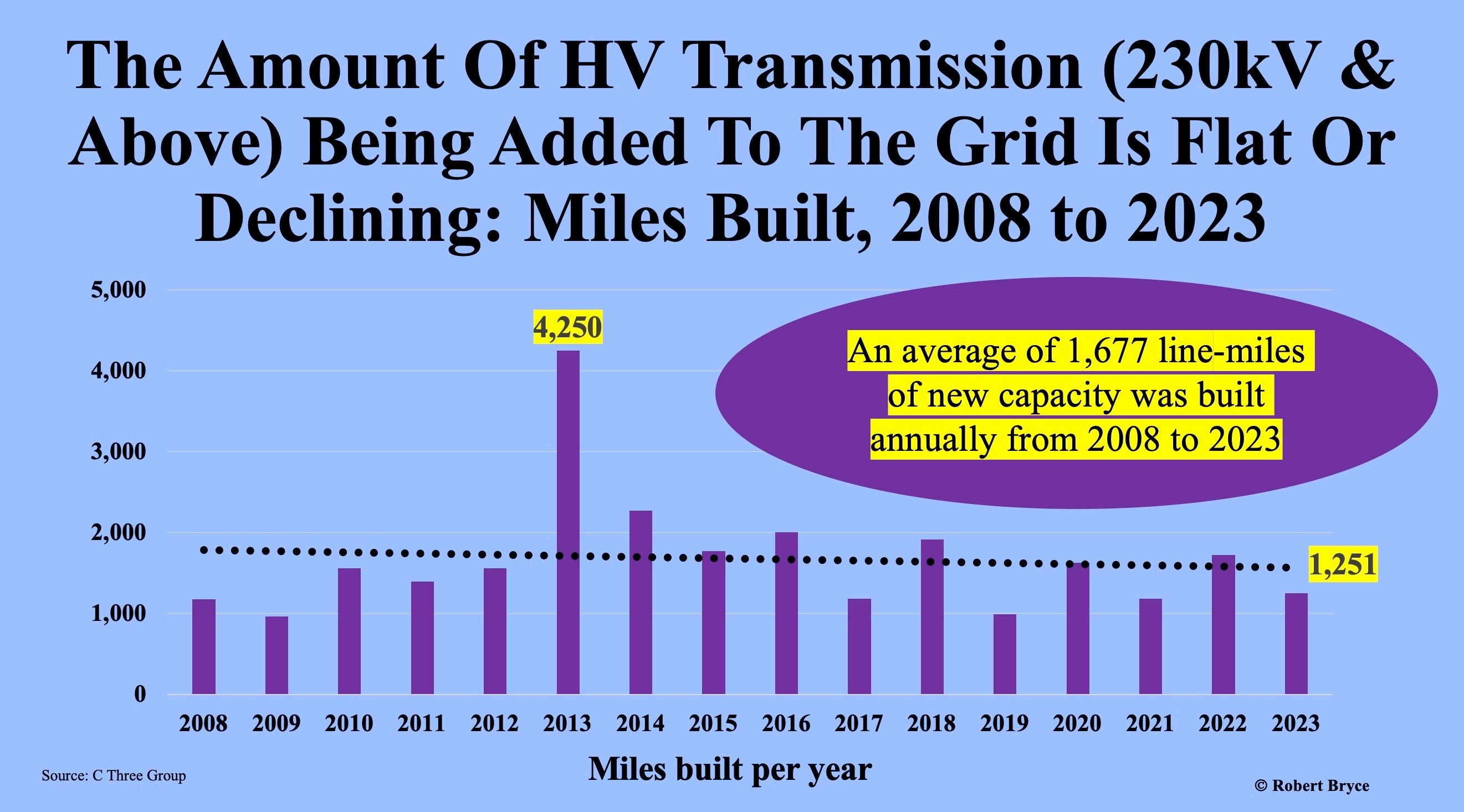
The “energy transition” depends on massive expansions of our high-voltage transmission grid. But capacity additions are falling, and per-mile costs and utility product costs are soaring.
Proponents of the much-hyped energy transition frequently claim that rapid decarbonization of the electricity sector can only be achieved with huge expansions of America’s high-voltage transmission grid. We are told those expansions, totaling tens of thousands of miles of new capacity, must be completed in the next decade or two.
Once this “grid modernization” has been completed, the new grid will deliver juice from vast areas of rural America that have been paved with solar panels and wind turbines to consumers living in distant cities. In doing so, this new grid will deliver us to the Valhalla of “a net-zero economy with high electrification of transport, industry, and buildings by midcentury,” in which, presumably, everyone is using “clean” energy that’s too cheap to meter.
But there’s a terawatt-size disconnect between the rhetoric and the reality. America isn’t building anything close to the amount of high-voltage transmission capacity that the wind promoters, solar advocates, and spreadsheet jockeys claim is needed. Indeed, the latest numbers from Atlanta-based C Three Group show that the amount of new high-voltage transmission (230kV and above) built annually in the United States is flat or declining. Furthermore, the cost of building new high-voltage capacity and the components needed to expand the electric grid is skyrocketing. Meanwhile, all across rural America, transmission projects are facing fierce resistance from local communities and some Native American tribes. Let’s take a look.
In 2023, the U.S. added about 1,251 miles of new high-voltage capacity. That’s significantly below the average number of miles added to the U.S. power grid over the past two decades. According to C Three, which has the best information on transmission trends in the U.S., about 1,677 miles of new high-voltage capacity was added annually to the grid between 2008 and 2023.

As seen in the graphic above, new capacity additions peaked in 2013, when Texas completed the CREZ lines, a system of HV lines spanning some 3,600 miles. That $7 billion project is significant because the CREZ lines were all built intrastate. That is, they didn’t cross any state boundaries, which made the permitting process much easier. In addition, Texas has very little federal land and relatively few state parks.
Costs are also soaring. Before diving into those numbers, reviewing the hype is essential. Last February, in the original “Out Of Transmission” published in these pages, I explained that billionaire investor John Doerr, who has funded a “sustainability” school at Stanford University and is giving hundreds of millions of dollars to climate activist groups, claims we need enormous expansions of the grid to accommodate more wind and solar projects.
Read the rest of this piece at Robert Bryce Substack.
Robert Bryce is a Texas-based author, journalist, film producer, and podcaster. His articles have appeared in a myriad of publications including the Wall Street Journal, New York Times, Forbes, Time, Austin Chronicle, and Sydney Morning Herald.
Photo: transmission lines out, courtesy Robert Bryce Substack.












